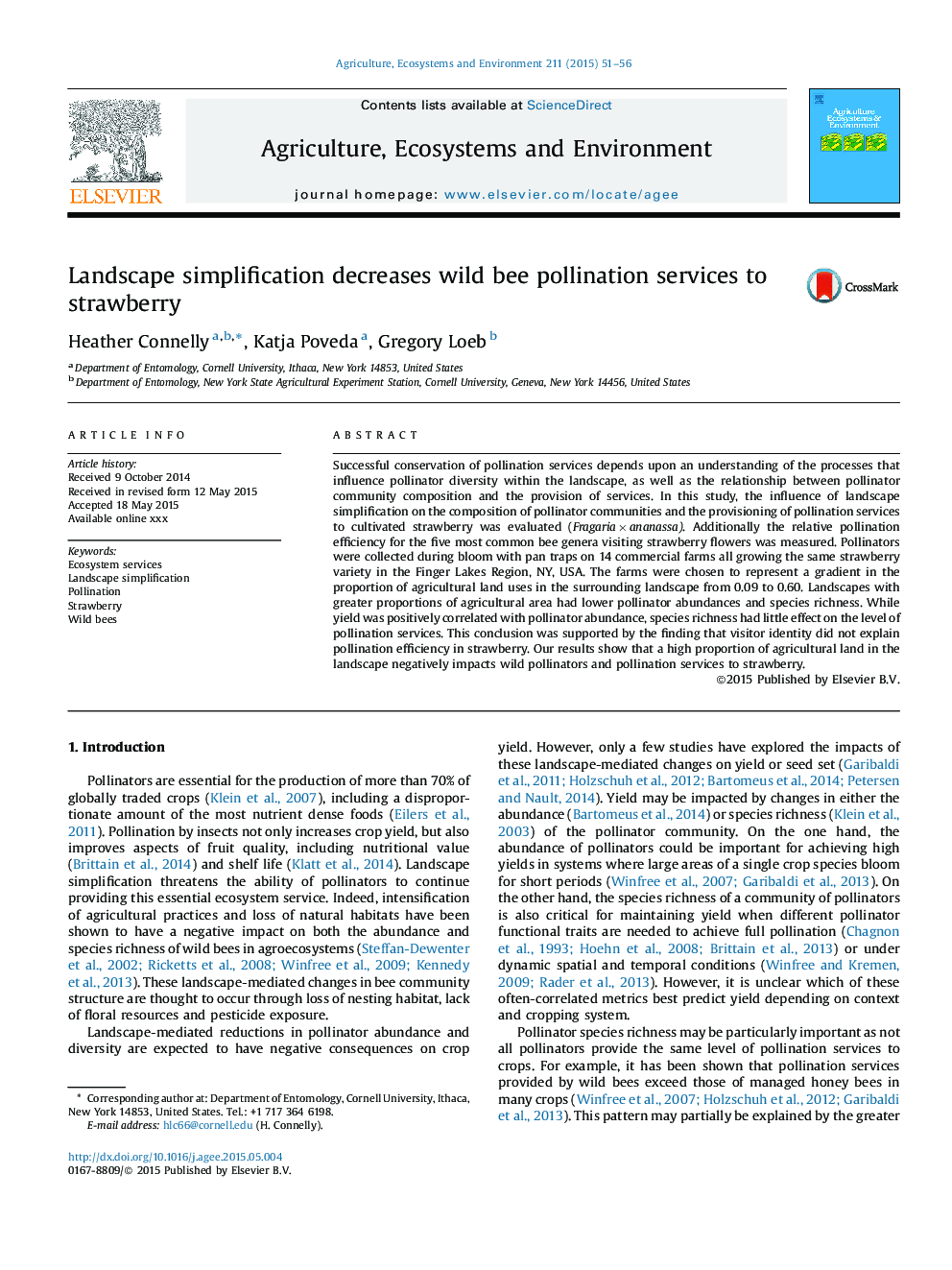| Article ID | Journal | Published Year | Pages | File Type |
|---|---|---|---|---|
| 8487654 | Agriculture, Ecosystems & Environment | 2015 | 6 Pages |
Abstract
Successful conservation of pollination services depends upon an understanding of the processes that influence pollinator diversity within the landscape, as well as the relationship between pollinator community composition and the provision of services. In this study, the influence of landscape simplification on the composition of pollinator communities and the provisioning of pollination services to cultivated strawberry was evaluated (Fragaria Ã ananassa). Additionally the relative pollination efficiency for the five most common bee genera visiting strawberry flowers was measured. Pollinators were collected during bloom with pan traps on 14 commercial farms all growing the same strawberry variety in the Finger Lakes Region, NY, USA. The farms were chosen to represent a gradient in the proportion of agricultural land uses in the surrounding landscape from 0.09 to 0.60. Landscapes with greater proportions of agricultural area had lower pollinator abundances and species richness. While yield was positively correlated with pollinator abundance, species richness had little effect on the level of pollination services. This conclusion was supported by the finding that visitor identity did not explain pollination efficiency in strawberry. Our results show that a high proportion of agricultural land in the landscape negatively impacts wild pollinators and pollination services to strawberry.
Related Topics
Life Sciences
Agricultural and Biological Sciences
Agronomy and Crop Science
Authors
Heather Connelly, Katja Poveda, Gregory Loeb,
